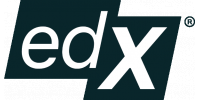- From www.edx.org
Big Data Fundamentals

- Self-paced
- Free Access
- Fee-based Certificate
- 10 Sequences
- Intermediate Level
Course details
Syllabus
Section 1: The basics of working with big data
Understand the four V’s of Big Data (Volume, Velocity, and Variety); Build models for data; Understand the occurrence of rare events in random data.
Section 2: Web and social networks
Understand characteristics of the web and social networks; Model social networks; Apply algorithms for community detection in networks.
Section 3: Clustering big data
Clustering social networks; Apply hierarchical clustering; Apply k-means clustering.
Section 4: Google web search
Understand the concept of PageRank; Implement the basic; PageRank algorithm for strongly connected graphs; Implement PageRank with taxation for graphs that are not strongly connected.
Section 5: Parallel and distributed computing using MapReduce
Understand the architecture for massive distributed and parallel computing; Apply MapReduce using Hadoop; Compute PageRank using MapReduce.
Section 6: Computing similar documents in big data
Measure importance of words in a collection of documents; Measure similarity of sets and documents; Apply local sensitivity hashing to compute similar documents.
Section 7: Products frequently bought together in stores
Understand the importance of frequent item sets; Design association rules; Implement the A-priori algorithm.
Section 8: Movie and music recommendations
Understand the differences of recommendation systems; Design content-based recommendation systems; Design collaborative filtering recommendation systems.
Section 9: Google's AdWordsTM System
Understand the AdWords System; Analyse online algorithms in terms of competitive ratio; Use online matching to solve the AdWords problem.
Section 10: Mining rapidly arriving data streams
Understand types of queries for data streams; Analyse sampling methods for data streams; Count distinct elements in data streams; Filter data streams.
Prerequisite
Candidates interested in pursuing the MicroMasters program in Big Data are advised to complete
andbefore undertaking this course.Instructors
Frank Neumann
Professor, School of Computer Science
University of Adelaide
Vahid Roostapour
PhD Student, School of Computer Science
University of Adelaide
Aneta Neumann
Postgraduate Researcher, School of Computer Science
University of Adelaide
Wanru (Kelly) Gao
Lecturer, School of Computer Science
University of Adelaide
Editor

Platform
Harvard University, the Massachusetts Institute of Technology, and the University of California, Berkeley, are just some of the schools that you have at your fingertips with EdX. Through massive open online courses (MOOCs) from the world's best universities, you can develop your knowledge in literature, math, history, food and nutrition, and more. These online classes are taught by highly-regarded experts in the field. If you take a class on computer science through Harvard, you may be taught by David J. Malan, a senior lecturer on computer science at Harvard University for the School of Engineering and Applied Sciences. But there's not just one professor - you have access to the entire teaching staff, allowing you to receive feedback on assignments straight from the experts. Pursue a Verified Certificate to document your achievements and use your coursework for job and school applications, promotions, and more. EdX also works with top universities to conduct research, allowing them to learn more about learning. Using their findings, edX is able to provide students with the best and most effective courses, constantly enhancing the student experience.

